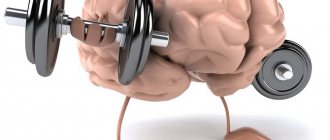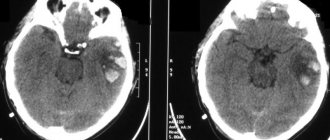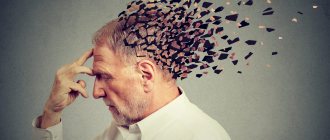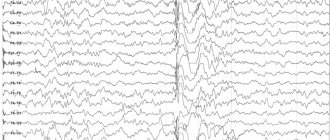Recently, The Lancet magazine published a large study on the intelligence of those who have recovered from COVID-19 coronavirus infection. The conclusions are pessimistic: even after complete recovery, cognitive abilities remain reduced. And the more severely a person suffered the disease, the more his intellect suffered. Is it treatable or do we become dull irrevocably and forever after illness?
The authors of the study, British scientists, shrug their shoulders: “We do not know what the mechanism for the observed decline in cognitive function after COVID-19 is. We also don't know how long the effects on mental abilities may last." Therefore, we invite you to listen to the opinion of a Russian specialist, a candidate of medical sciences. As part of the work on a new project, the Science channel interviewed the director of the Rehabilitation Center of Sechenov University, Konstantin Ternovoy.
How coronavirus affects the body
The more severe the acute phase, the more likely the severity and duration of post-Covid complications will be. Chinese colleagues who conducted a study on a very large material revealed statistics: even if you did not end up in the hospital, had a fairly mild course and outpatient treatment, then about 30% of these people still need rehabilitation. What can we say about people who have lung damage of 70% or more? About those who spent 45 days in intensive care?
The basis of the damage that the body receives after contact with the virus is the formation of blood clots. When blood clots get into the lung tissue, it is not exactly pneumonia, but rather pneumonitis, that is, these are small thromboses in the lung tissue. Blood clots can also form in the brain area, in which case the disease follows the pattern of a stroke. There may also be a skin lesion, and it is clear that this will manifest itself in a different way than coughing.
Similar consequences arise as a result of the impact of the virus on the blood system - homeostasis. We always have a balance between the system that clots the blood and the system that thins it. When the balance is disturbed, thrombus formation occurs more actively. Therefore, the main treatment for coronavirus infection is blood thinning drugs; they are prescribed to everyone. But the prescription of antiviral or antibiotics depends on the time of detection, time of admission to the hospital and other factors.
About Men and Mice
During this process, mature neurons do not divide, just as muscle fiber cells and red blood cells do not divide: various stem cells that retain their “naive” ability to reproduce are responsible for their formation. One of the descendants of the divided progenitor cell becomes a young specialized cell and matures into a fully functional adult state. The other daughter cell remains a stem cell: this allows the population of progenitor cells to be maintained at a constant level without sacrificing the renewal of the surrounding tissue.
Neuronal precursor cells were found in the dentate gyrus of the hippocampus. Later they were found in other parts of the rodent brain, in the olfactory bulb and the subcortical structure of the striatum. From here, young neurons can migrate to the desired area of the brain, mature in place, and integrate into existing communication systems. To do this, the new cell proves its usefulness to its neighbors: its ability to excite is increased, so that even a weak impact causes the neuron to produce a whole volley of electrical impulses. The more active a cell is, the more connections it forms with its neighbors and the faster these connections stabilize.
Adult neurogenesis in humans was confirmed only a couple of decades later with the help of similar radioactive nucleotides - in the same dentate gyrus of the hippocampus, and then in the striatum. Our olfactory bulb, apparently, is not renewed. However, how active this process is and how it changes over time is not exactly clear today.
For example, a 2013 study showed that until old age, approximately 1.75% of cells in the dentate gyrus of the hippocampus are renewed each year. And in 2018, results emerged showing that the formation of neurons here stops already in adolescence. The first measured the accumulation of radioactive tracers, and the second used dyes that selectively bind to young neurons. It is difficult to say which conclusions are closer to the truth: it is difficult to compare rare results obtained by completely different methods, and even more so to extrapolate work done on mice to humans.
The first studies of neurogenesis were carried out on planarian flatworms, and the first vertebrate models were axolotls. Today, experiments most often take place with zebrafish and laboratory rodents
What consequences arise
Everyone is susceptible to post-Covid syndrome, the only question is what is more vital for you. If you have a lesion on your skin, you can live with it and not even see a doctor. When you have trouble breathing, rushing to the hospital is vital. If you start to think poorly, you will react to this much faster than if you have a skin rash. Naturally, the respiratory and nervous systems come first for us.
25% of people, according to our sample and according to other colleagues, suffer from dysfunctions of the higher central nervous system. The virus penetrates through the vessels into the cells that protect these vessels, and subsequently passes to the cells of the nervous system, causing changes. About a quarter of patients have a disorder of the central nervous system such as encephalopathy, that is, a disorder of the higher function of the brain. This can manifest itself in different ways: as a violation of short-term memory, a mood disorder, a synthesis disorder, when a person cannot remember the name of an object. For example, he can describe a device that emits light and is located in a glass bulb, but cannot say the word “light bulb.” Or he describes the person from his address book, who needs to be called, with the words “tall, with a beard, tanned,” but he doesn’t remember his name.
30% complain of severe weakness, about 40% of hair loss, about 30% of pain in joints and muscles. About 15% complain of loss of sleep and disruption of the day-night rhythm. This is often associated with a long stay in the hospital and intensive care unit. We see mood disorders in large numbers, and it’s not surprising. I have patients who spent 45 days in intensive care on their stomachs. Can you imagine what they were thinking? When you are suffocating just from starting to talk, and you still have children at home, and your neighbor has just, excuse me, been packed up and taken away, what are you going to think about? I believe that many people need psychotherapy after suffering from coronavirus.
Model problems
Most studies of adult neurogenesis are conducted in laboratory animals, which reproduce quickly and are easy to maintain. This combination of characteristics is found in those who are small in size and live very short lives - mice and rats. But in our brains, which only finish maturing by age 20, things can happen completely differently.
The dentate gyrus of the hippocampus is part of the cerebral cortex, albeit a primitive one. In our species, like in other long-living mammals, the cortex is noticeably more developed than in rodents. Perhaps neurogenesis covers its entire volume, being realized by some of its own mechanisms. There is no direct evidence of this yet: studies of adult neurogenesis in the cerebral cortex have not been performed either in humans or in other primates.
But such work has been carried out with ungulates. A study of sections of the brain of newborn lambs, as well as slightly older sheep and sexually mature individuals, did not find dividing cells - the precursors of neurons in the cerebral cortex and subcortical structures of their brains. On the other hand, in the cortex of even older animals, young neurons that were already born but immature were found. Most likely, they are ready to complete specialization at the right moment, forming full-fledged nerve cells and taking the place of the dead. Of course, this is not exactly neurogenesis, because new cells are not formed during this process. However, it is interesting that such young neurons are present in those areas of the sheep brain that in humans are responsible for thinking (cerebral cortex), integration of sensory signals and consciousness (claustrum), and emotions (amygdala). There is a high probability that we will also find immature nerve cells in similar structures. But why might an adult, already trained and experienced brain need them?
Business on nerves
Despite the lack of accurate information about adult neurogenesis, businessmen have already appeared who are ready to build a profitable business on it. Since the early 2010s, a company that sells water from springs in the Canadian Rockies has been producing Neurogenesis Happy Water
.
It is claimed that the drink stimulates the formation of neurons due to the lithium salts it contains. Lithium is indeed considered a drug beneficial for the brain, although there is much more of it in tablets than in “happy water”. The effect of the miracle drink was tested by neuroscientists from the University of British Columbia. They gave rats “happy water” for 16 days, and a control group - plain water from the tap, and then examined slices of the dentate gyrus of their hippocampus. And although the rodents that drank Neurogenesis Happy Water
had as much as 12% more new neurons, their total number was small and there is no statistically significant advantage.
For now, we can only state that adult neurogenesis clearly exists in the brain of representatives of our species. Perhaps it continues until old age, or maybe only until adolescence. It's actually not that important. What is more interesting is that the birth of nerve cells in the mature human brain generally occurs: from the skin or from the intestines, the renewal of which occurs constantly and intensively; the main organ of our body differs quantitatively, but not qualitatively. And when the information about adult neurogenesis forms a coherent, detailed picture, we will understand how to translate this quantity into quality, forcing the brain to “repair”, restore the functioning of memory, emotions - everything that we call our life.
Memory hypothesis
The number of neurons is so large that some of them can be safely sacrificed. However, if a cell has switched off from working processes, this does not mean that it has died. The neuron may stop generating signals and responding to external stimuli. The information he has accumulated does not disappear, but is “canned.” This phenomenon has led Carol Barnes, a neuroscientist at the University of Arizona, to theorize that this is how the brain stores and shares memories from different periods of life. According to Professor Barnes, from time to time a group of young neurons appears in the dentate gyrus of the hippocampus to record new experiences. After some time - weeks, months, and maybe years - they all go into a state of rest and no longer send signals. This is why memory (with rare exceptions) does not retain anything that happened to us before the third year of life: access to this data is blocked at some point.
Considering that the dentate gyrus, like the hippocampus as a whole, is responsible for transferring information from short-term memory to long-term memory, this hypothesis even seems logical. However, it still needs to be proven that the adult hippocampus actually produces new neurons, and in fairly large numbers. There is only a very limited set of possibilities for conducting experiments.
Stress story
Typically, human brain specimens are obtained during autopsy or neurosurgery, such as for temporal lobe epilepsy, where seizures are not treatable with drugs. Both options do not allow us to trace how the intensity of adult neurogenesis affects brain function and behavior.
Such experiments were carried out on rodents: the formation of new neurons was suppressed by targeted gamma radiation or by turning off the corresponding genes. This exposure increased the animals' susceptibility to depression. Mice incapable of neurogenesis were almost not happy about sweetened water and quickly gave up trying to stay afloat in a water-filled container. The content of cortisol, the stress hormone, in their blood was even higher than in mice stressed by conventional methods. They were more likely to become dependent on cocaine and had poorer recovery from stroke.
One important note worth making about these results: it is possible that the shown connection “fewer new neurons - a sharper reaction to stress” closes on itself. Unpleasant life events reduce the intensity of adult neurogenesis, which makes the animal more sensitive to stress, so the rate of formation of neurons in the brain decreases - and so on in a circle.









